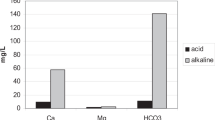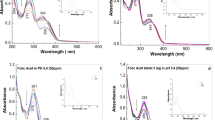Abstract
WE have put forward previously the view that vitamin P acts upon vitamin C as a ‘sparing factor' by slowing down its oxidation; this factor should be indispensable, for without it the organism would need vitamin C in much larger quantities than can be supplied by a normal diet1. This theory led us to carry out two series of experiments. The first showed that various substances capable of raising the mean capillary resistance of a group of guinea pigs decrease in vitro oxidation of l-ascorbic acid2. The other showed that l-ascorbic acid, administered to guinea pigs, even in large doses and over a long period, is inefficient if the animals are given at the same time a diet deficient in an ascorbic acid economizing factor. Conversely, if vitamin P is added, l-ascorbic acid, even in small doses, becomes fully efficient ; vitamin P alone, without ascorbic acid, has no effect. The tests used were the mean capillary resistance of a group of guinea pigs and the histological picture of the thyroid gland and of the cortico-adrenal gland3.
This is a preview of subscription content, access via your institution
Access options
Subscribe to this journal
Receive 51 print issues and online access
$199.00 per year
only $3.90 per issue
Buy this article
- Purchase on Springer Link
- Instant access to full article PDF
Prices may be subject to local taxes which are calculated during checkout
Similar content being viewed by others
References
Parrot, J.-L., Galmiche, P., Cotereau, H., C.R. Soc. Biol., Paris, 139, 496 (1945).
Parrot, J.-L., and Cotereau, H., C.R. Soc. Biol, Paris, 140, 61 (1946), and Arch. Int. Physiol., 54, 197 (1946). Cotereau, H., "Contribution à l'étude des rapports entre l‘acide ascorbique et la vitamine C2 (P)", Thèse Doct. Pharm. (Paris, 1947).
Cotereau, H., Gabe, M., and Parrot, J.-L., Nature, 158, 343 (1946); Parrot, J.-L., Gabe, M., Cotereau, H., C.R. Soc. Biol., Paris, 140, 750 and 752 (1946); Gabe, M., Parrot, J.-L., Cotereau, H., C.R. Soc. Biol., Paris, 140, 754 (1946); 141 (1947).
Meunier, P., and Raoul, Y., "Le diagnostic chimique des avitaminoses" (Masson, 1942).
Géro, E., Bull. Soc. Chim. biol. (June 1947).
Giroud, Leblond, Ratsimamanga and Géro, Bull. Soc. Chim. biol., Paris, 20, 1088 (1938).
Author information
Authors and Affiliations
Rights and permissions
About this article
Cite this article
COTEREAU, H., GABE, M., GÉRO, E. et al. Influence of Vitamin P (Vitamin C2) upon the Amount of Ascorbic Acid in the Organs of the Guinea Pig. Nature 161, 557–558 (1948). https://doi.org/10.1038/161557a0
Issue Date:
DOI: https://doi.org/10.1038/161557a0
This article is cited by
-
The functional interaction of vitamins C, P, and B1
Bulletin of Experimental Biology and Medicine (1960)
-
Der Einfluß von Vitamin P auf die experimentelle Penicillin-Intoxikation
Zeitschrift für Die Gesamte Experimentelle Medizin (1956)
Comments
By submitting a comment you agree to abide by our Terms and Community Guidelines. If you find something abusive or that does not comply with our terms or guidelines please flag it as inappropriate.



